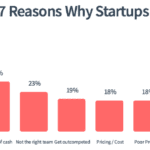How to Choose the Right Business Model for Long-Term Success
Starting a business is exciting, but choosing the right business model is critical for long-term success. The right model determines how you generate revenue, attract customers, and sustain growth. Many startups fail not because of bad ideas, but because they choose the wrong business model for their market.
In this guide, we’ll explore different business models, how to choose the best one, and tips to ensure long-term profitability and sustainability.
What is a Business Model?
A business model is how a company creates, delivers, and captures value. It defines:
✔ How the business earns revenue
✔ What products or services it offers
✔ How it acquires and retains customers
✔ What costs and operations are involved
Choosing the right model ensures profitability, scalability, and long-term sustainability.
Types of Business Models (And Which One is Right for You)
Different business models work for different industries and goals. Here are some popular business models and how to determine the best fit for your business.
1. Subscription Model
📌 How It Works: Customers pay a recurring fee (monthly or annually) for access to a product or service.
💡 Examples: Netflix, Spotify, Amazon Prime, SaaS companies (e.g., Adobe Creative Cloud)
✅ Best For:
✔ Software as a Service (SaaS)
✔ Membership-based businesses (gyms, digital courses)
✔ Content platforms (news websites, video streaming)
🚀 Why It’s Great:
-
Predictable revenue stream
-
Encourages customer loyalty and retention
-
Can scale without major operational costs
⚠️ Challenges:
-
Requires consistent value to prevent cancellations
-
Customer acquisition can be expensive upfront
🔹 Choose this model if you can offer continuous value and want stable recurring revenue.
2. E-Commerce Model
📌 How It Works: Sell physical or digital products online.
💡 Examples: Amazon, Shopify stores, Etsy, eBay
✅ Best For:
✔ Retail businesses (clothing, electronics, beauty)
✔ Handmade or custom products
✔ Digital products (ebooks, templates, online courses)
🚀 Why It’s Great:
-
Can reach a global audience
-
Low startup costs (especially with dropshipping or print-on-demand)
-
Flexible pricing and sales models
⚠️ Challenges:
-
Highly competitive market
-
Logistics and inventory management can be challenging
🔹 Choose this model if you want to sell products online and have a good marketing strategy.
3. Marketplace Model
📌 How It Works: The business connects buyers and sellers, taking a commission on transactions.
💡 Examples: Airbnb, Uber, Fiverr, Etsy
✅ Best For:
✔ Connecting freelancers and clients
✔ Sharing economy businesses (rental services, transportation)
✔ Businesses that don’t want to hold inventory
🚀 Why It’s Great:
-
No need to create products—just connect buyers and sellers
-
Scalability is high (network effects make platforms more valuable over time)
⚠️ Challenges:
-
Requires a large user base to be profitable
-
Balancing supply and demand can be tricky
🔹 Choose this model if you can build a platform that connects buyers and sellers efficiently.
4. Freemium Model (Free + Premium Upgrades)
📌 How It Works: Offer a basic service for free, with paid premium features.
💡 Examples: LinkedIn, Dropbox, Canva, Spotify (free vs. premium version)
✅ Best For:
✔ Digital products and software
✔ Content-driven businesses (news, blogs, apps)
✔ Businesses with upsell opportunities
🚀 Why It’s Great:
-
Attracts a large audience quickly
-
Converts free users into paying customers over time
⚠️ Challenges:
-
Must provide enough free value while incentivizing upgrades
-
Conversion rates can be low (only 1-5% of free users may convert)
🔹 Choose this model if you can attract a large user base and upsell premium features.
5. Affiliate & Commission-Based Model
📌 How It Works: Earn a commission by promoting other companies’ products.
💡 Examples: Amazon Associates, influencers with brand partnerships, bloggers with affiliate links
✅ Best For:
✔ Content creators (bloggers, YouTubers, social media influencers)
✔ Websites with high traffic
✔ Businesses that want passive income
🚀 Why It’s Great:
-
Low upfront costs (you don’t need to create a product)
-
Scalability without inventory or customer service concerns
⚠️ Challenges:
-
Requires a strong audience and trust
-
Earnings depend on commission rates from other companies
🔹 Choose this model if you have an engaged audience and want to earn passive income.
How to Choose the Right Business Model
Picking the right model depends on your industry, target audience, resources, and goals. Follow these steps to make the best choice:
1. Identify Your Target Market
✔ Who are your ideal customers?
✔ What problems do they have?
✔ How do they prefer to buy and pay for products/services?
2. Analyze Your Strengths & Resources
✔ Do you have technical skills (good for SaaS or e-commerce)?
✔ Can you create engaging content (good for affiliate marketing or freemium)?
✔ Do you want recurring revenue (subscription model) or one-time payments (e-commerce)?
3. Evaluate Scalability & Profit Potential
✔ Can your business grow without massive investment?
✔ Does your model allow for repeat customers and long-term revenue?
✔ Are there existing successful businesses in your niche using this model?
4. Test & Validate Before Committing
✔ Start with a Minimum Viable Product (MVP) to see if customers are interested.
✔ Get feedback from early users/customers.
✔ Be flexible—pivot if necessary based on market demand.
Final Thoughts: The Key to Long-Term Business Success
The right business model lays the foundation for sustainable growth, profitability, and long-term success.




